RECOIL OFFGRID Transportation Vintage Electric Bikes Scrambler S: A Survival Ebike Review
While I was writing this article, strong Santa Ana winds had caused catastrophic fires in several regions of California. In the name of public safety, Pacific Gas and Electric (PG&E) — California’s largest utility company — intentionally shut down power to hundreds of thousands of people. The idea was simple: If there’s no power running through utility lines, the risk of fire goes down. Unfortunately, the most recent fire started when a tree fell on a power line in an area where power hadn’t been turned off yet.
These events are yet another reminder that our world is changing rapidly. The evolution and progression of technology has anchored our dependence on the power grid, and this is making us more vulnerable. I want you to ask yourself this question: What would I do if a catastrophe disabled and destroyed the infrastructure that my family is dependent on? No more cell phones, no electricity, no water, no gas, and everybody fighting for the same resources. What’s your bug-out plan?
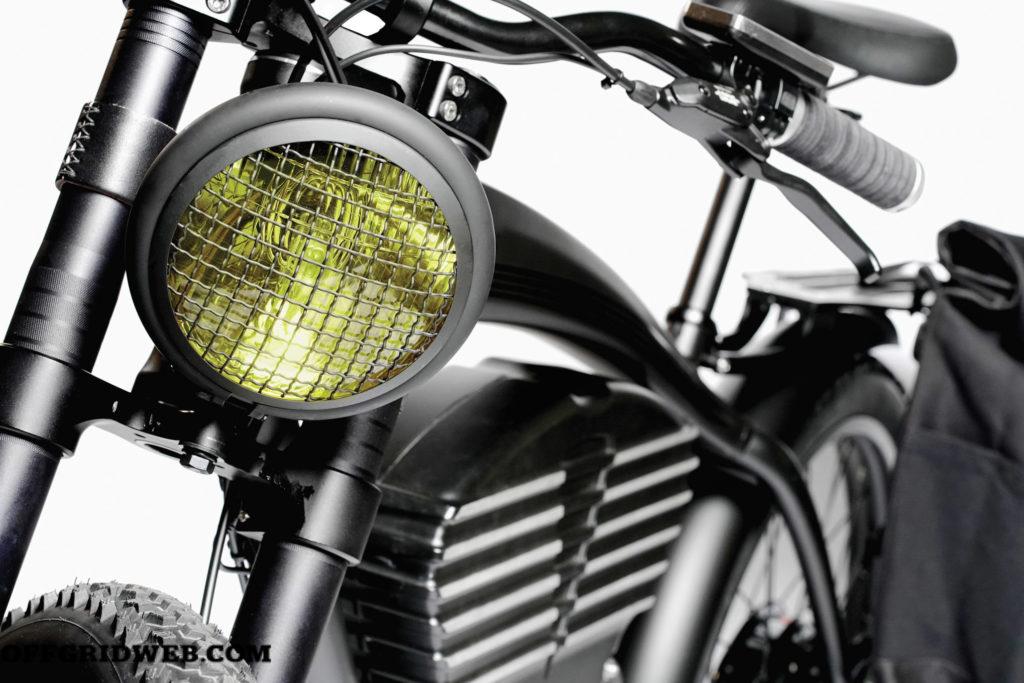
As survivalists, we teach self-reliance by utilizing the proper equipment, leveraging our technical skills, and applying the proper mindset. It’s also critical to understand that in a natural or man-made disaster, you’ll inevitably become your own first responder. As an example, like I highlighted in the very beginning of this article, the wildfires in California present a real and present danger to citizens. On November 18, 2018, in Butte County in Northern California, the “Camp Fire” burned 153,000 acres and killed 85 people, including five firefighters. The fire destroyed nearly the entire community of Paradise and cost close to $16.5 billion in damage. (For a firsthand account from a survivor we interviewed, read this web-exclusive article.) So, in considering the question of what you’d do right now, we have to look at our capability based on available options — here’s where an electric bike comes in.
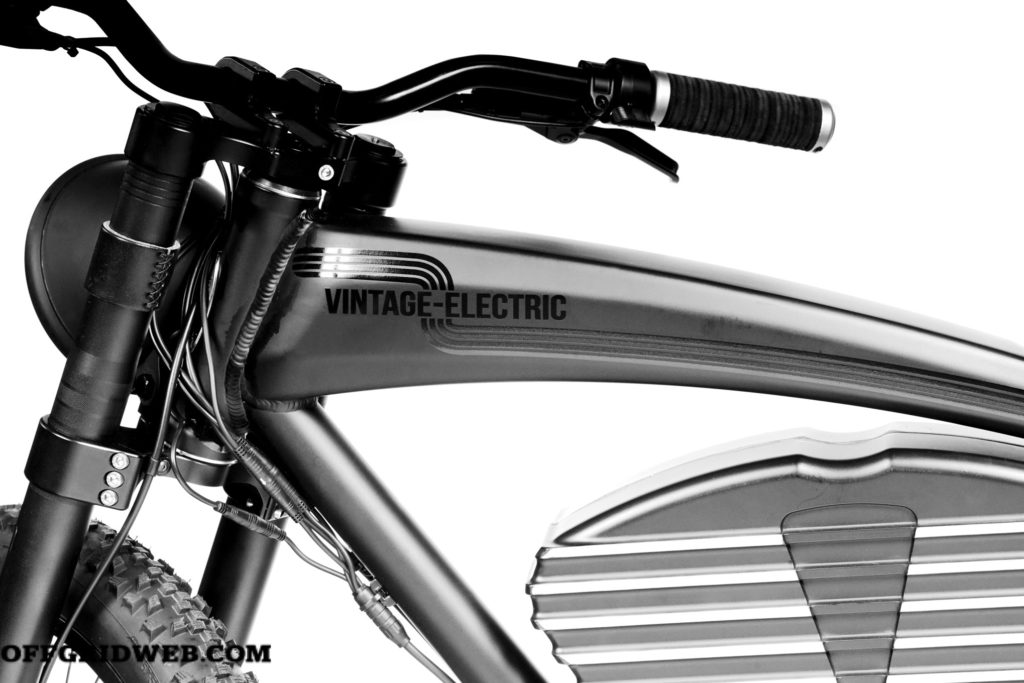
We got our hands on an electric bike made by Vintage Electric Bikes from Santa Clara, California. We’ve tested and evaluated a few bikes, but this is the first one we actually assessed specifically as a “bug-out” bike. There are several reasons why an electric bike would be a great option to get out of a bad situation, and they start with the size of the platform. Unlike “go-rigs” or full-size vehicles capable of getting off-grid, when the infrastructure or grid shuts down, people’s natural behavior is to displace themselves from the danger. This means hitting the road in their vehicle and creating as much distance as possible. With so many heading for the hills, you can imagine that when rush-hour traffic looks bad at peak hours, an emergency exfil looks vastly worse. At least nine people were found dead in their cars after the aforementioned Camp Fire spread across crowded roads. The advantage of a bike is its ability to navigate along roads that are jammed, easily taking alternate routes that vehicles can’t maneuver through.
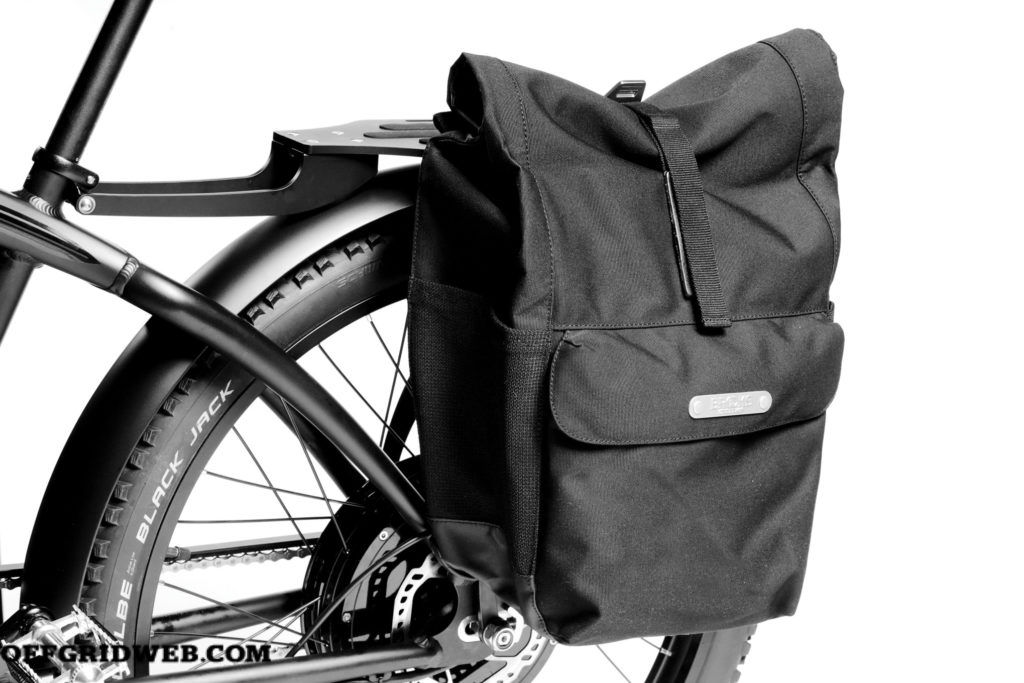
Obviously in a catastrophe you’ll see the loss of electricity, damage or destruction to gas stations, and a surge of people fighting for turns at the pump. I’ve been in foreign countries where man-made disasters have led to chaos where militias were fighting for control over gas stations. In those situations, getting gas wasn’t an option without risking your life. Not having a dependence on resources that operate off the grid is a huge advantage.
Most electric bike companies are taking aggressive approaches in making their bikes stand out. When you have a pretty competitive and new space, you’re going to see a lot of unique setups. I’ve tested electric bikes that look like pit bikes, bikes that are custom built and made for off-road, and bikes built for military applications where stealth and speed are paramount. But innovation and design features in this space come at a cost. The bike we tested from Vintage Electric Bikes is called the Scrambler S and costs around $7,000, which is by no means cheap, but still less than some other bikes in its class.
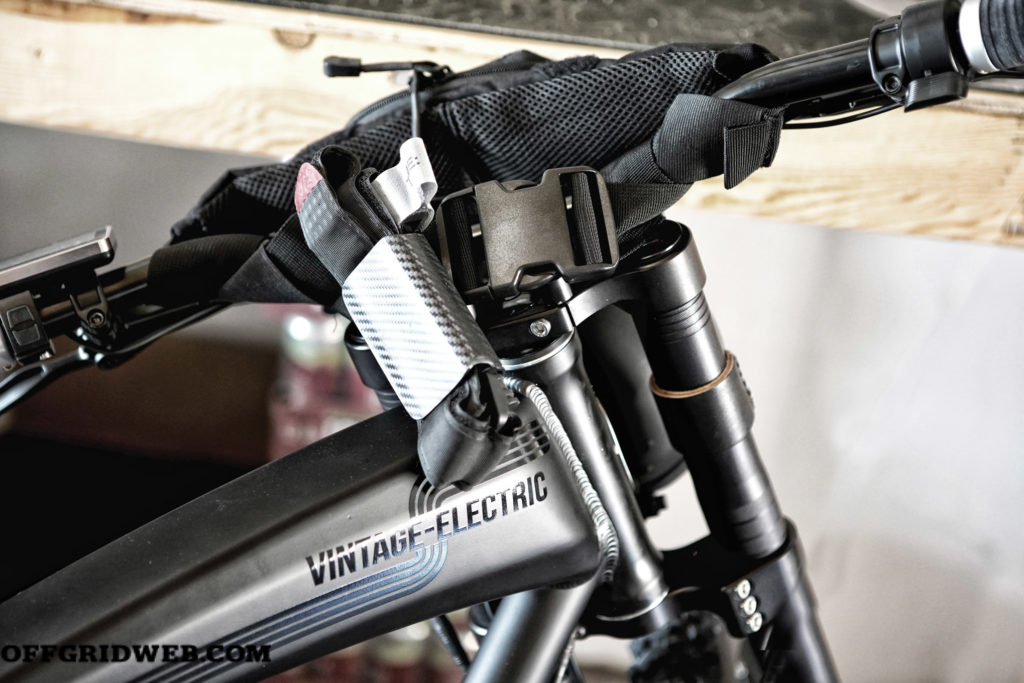
Above: The use of an “off-road only” limiting plug gives the Scrambler a great edge over some of its competitors: It doesn’t have to be registered or plated like a car.
The Scrambler S is a bike that’s “best experienced in the dirt,” according to Vintage Electric’s website, and it comes with standard equipment that sets it up for just that. It features a rugged suspension fork and knobby tires that allow it to coast smoothly on paved roads but retain traction on loose dirt and sand. At 86 pounds on an aluminum frame, this bike is definitely lighter than most. Our first impressions on the ergonomics and rideability were that it actually feels like a normal bike, because technically it is. Besides the added battery and hub on the rear wheel, it feels like a regular bicycle, and we like that. So many other electric bikes are built like hybrid dirt bikes, which can be intimidating for novice riders. The bike has a large amber light up front with a grated metal screen to protect it from rocks and debris, and the rear underneath the seat has an LED taillight as well.
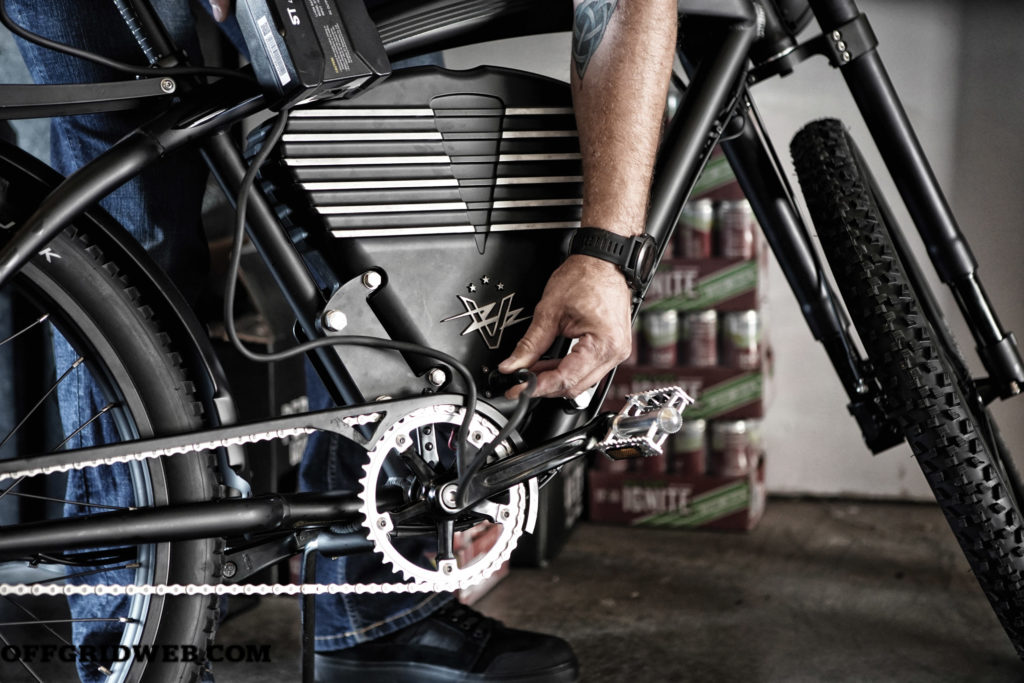
Above: Rugged but low profile, the Scrambler may serve as a good fallback or contingency option for bugging out, depending on your local terrain and needs.
Vintage Electric Bikes claims this bike’s top speed is between 20 and 36 miles per hour. An “off-road”-only plug must be screwed into the side of the bike to allow it to exceed 20 mph. This is important to note because many e-bike companies haven’t thought this out, and instead exceed 20 mph, which then forces the owner to register and plate the bike in his or her home state. This is genius and avoids a lot of the reasons people don’t want to purchase an electric bike that may or may not have to be registered, plated, and insured. Check your local state laws on e-bikes and understand the classifications of electric bikes as noted by bikelaw.com:
1. “Class 1 electric bicycle” or “low-speed pedal-assisted electric bicycle” shall mean a bicycle equipped with a motor that provides assistance only when the rider is pedaling, and that ceases to provide assistance when the bicycle reaches the speed of 20 miles per hour.
2. “Class 2 electric bicycle” or “low-speed throttle-assisted electric bicycle” shall mean a bicycle equipped with a motor that may be used exclusively to propel the bicycle, and that is not capable of providing assistance when the bicycle reaches the speed of 20 miles per hour.
3. “Class 3 electric bicycle” or “speed pedal-assisted electric bicycle” shall mean a bicycle equipped with a motor that provides assistance only when the rider is pedaling, and that ceases to provide assistance when the bicycle reaches the speed of 28 miles per hour.
We tested the Scrambler S in Prescott, Arizona, at around 5,000 feet in elevation and decided to evaluate its capability on- and off-road, replicating a bug-out scenario from an urban area to a rural one. This took us from the downtown area of Prescott to the woodline surrounding the foothills, and eventually into over 6,000 feet of elevation. On our initial “bug out,” the power was readily available, but as we gained elevation it became apparent that with added weight comes added strain on the motor and thus the speed in which the bike accelerated. Our average speed up into the foothills was around 20 mph still, but we noticed the battery started to die quickly as we continued our trip. The advertised range of the Scrambler S is 75 miles; our journey began on a fully charged battery and ended at mile 13 when it ran out of juice. Now in all fairness, we had the bike loaded down with a backpack weighing in at 35 pounds and the rider who weighs nearly 260 pounds.
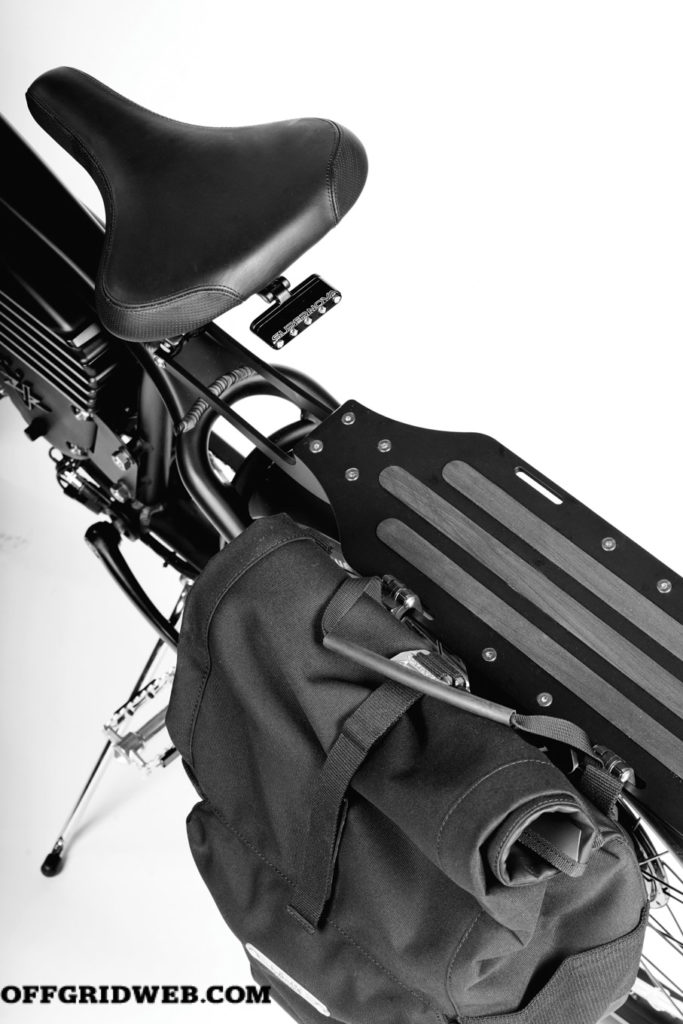

Above: The addition of a “saddle bag” allows on-board storage of small EDC or immediate-need tools and supplies.
This option from Vintage Electric Bikes is a viable option for bugging out, but given the price and the battery considerations, it might not be the most economical or primary plan for most people. A cheap dirt bike is loud and fuel hungry at full throttle, but may greatly exceed the range of an electric option with one full tank. The biggest concern we have is bugging out on the initial push. You’re obviously limited by battery capacity depending on weight, but then, what happens when you’re out of charge in the middle of nowhere? You probably won’t be able to find an outlet and wait for the batteries to charge, but you may be able to acquire fuel and fill a tank in a few minutes. All in all, it’s definitely a consideration, but a contingency at best for me until the infrastructure catches up with the technology.
Weight: 86 pounds
Battery: 48v 23.4 Ah (1,123 Watt Hours)
MSRP: $6,995
URL: www.vintageelectricbikes.com
 STAY SAFE: Download a Free copy of the OFFGRID Outbreak Issue
STAY SAFE: Download a Free copy of the OFFGRID Outbreak Issue
No Comments